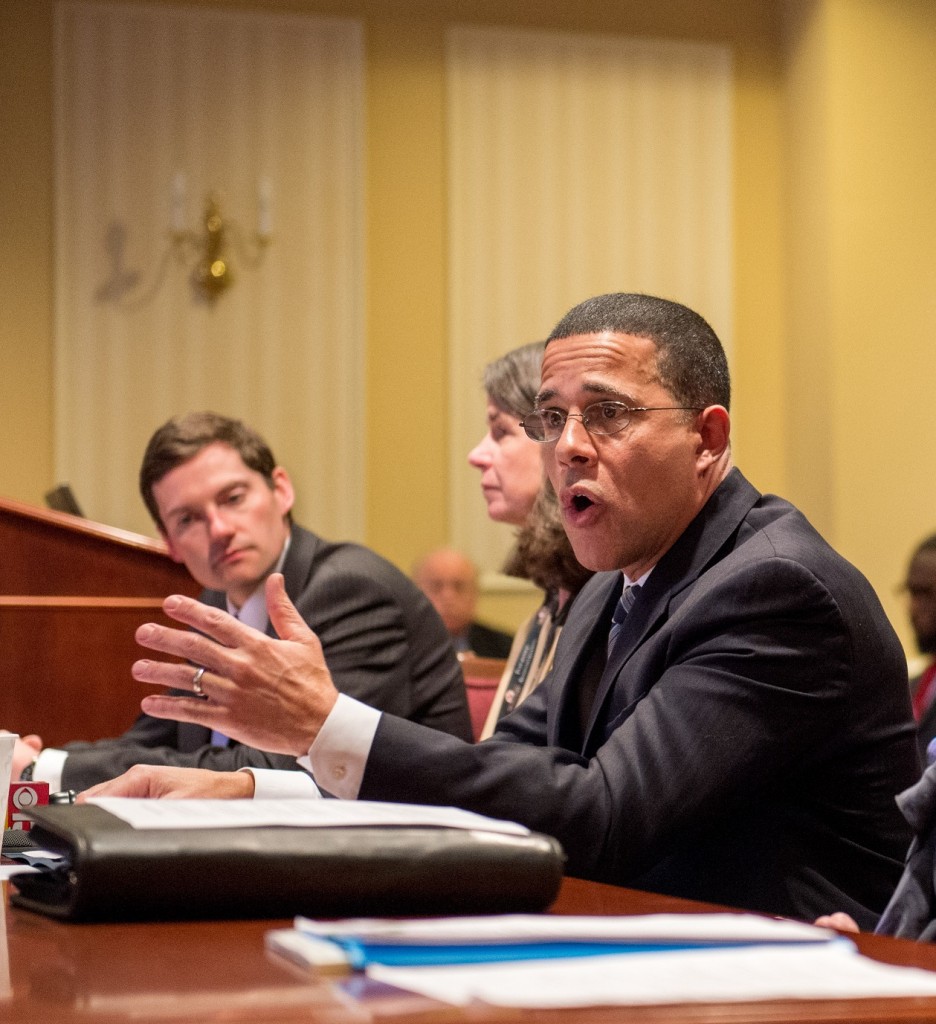Rascovar column: Brown has a health care albatross
For MarylandReporter.com
Maryland’s lieutenant governor, Anthony Brown, has a problem that won’t go away — his still unexplained leadership role in the state’s disastrous Obamacare rollout.
This is the biggest sticking point in Brown’s run for governor. It could become an insurmountable obstacle if public attention remains focused on those computer glitches and poor sign-up results.
Week One of the General Assembly session brought no relief.
Brown testified before two panels on a Band-Aid measure to rescue perhaps thousands of Marylanders who couldn’t sign up for health insurance because of the state’s horribly dysfunctional software product.
Reading from a prepared text is one of his strong points. Answering questions isn’t. Brown ducked the few hard queries tossed his way and headed for the door without fully admitting his responsibility for Maryland’s $170 million embarrassment.
He left Health Secretary Josh Sharfstein behind to make a heartfelt apology, give an explanation of what went wrong and take the heat.
What wasn’t asked
This left a number of key questions hanging:
- Was Brown a figurehead leader of the healthcare insurance rollout?
- What did Brown know about the behind-the-scenes fiasco that was building over the past year?
- When did he know it?
- Why didn’t he roll up his sleeves and get fully engaged in the administration’s most important project for which he was the designated point man?
- Why was he left out of the loop?
We may never get complete answers.
While a few legislative committees will poke around in the state’s Obamacare closet, this won’t be a Watergate-style investigation.
Too many Democrats already have endorsed Brown for governor. They will take care not to make the lieutenant governor look bad.
Questions won’t go away
Yet unless the signup numbers improve dramatically — not likely – the public will receive constant reminders of Maryland’s healthcare belly-flop during the General Assembly session.
And once the legislature goes home, the governor’s race will heat up, with Brown the center of attention.
Attorney General Doug Gansler, his chief rival, will spend most of his $6.3 million treasury reminding voters of Brown’s leadership role in the state’s biggest disaster since the savings and loan collapse in the 1980s.
Televised debates between the gubernatorial candidates could provide a flashpoint. It may be the only time Gansler gets to directly point a finger at Brown for his culpability in the healthcare disaster and demand an answer.
Thanks to the Washington Post, we have a picture of the chaos and astounding incompetence that surrounded Maryland’s ill-fated launch of its health insurance exchange. (A grand total of four people signed up that first day.)
And thanks to the Baltimore Sun, we have a reminder of how screwed up the healthcare debacle remains. (Inadvertently directing people trying to sign up to a Seattle pottery shop. The snafu continued for four months. A day after The Sun alerted state officials, the poor Seattle shop owner was still getting calls from frustrated Marylanders.)
If people’s health weren’t at risk, these human absurdities would make a hilarious “Seinfeld” episode.
Brown’s Dilemma
The self-identified leader of this healthcare reform, Anthony Brown, remains all but invisible as the situation unravels. How is he going to explain all this?
At last week’s legislative hearings, he refused to apologize for what happened. He pretty much pointed an accusatory finger at everyone else for hiding the cold, hard truth from him.
Still, Brown appears well positioned to capture the governorship.
He’s got the establishment’s political endorsements. He’s got Gov. Martin O’Malley doing everything he can to ease his path to victory. He’s got more money to spend on his campaign than Gansler.
Yet it might not be enough if Anthony Brown continues wearing the conspicuous healthcare albatross around his neck.
# # #
You can read Barry Rascovar’s other columns at www.politicalmaryland.com

MarylandReporter.com is a daily news website produced by journalists committed to making state government as open, transparent, accountable and responsive as possible – in deed, not just in promise. We believe the people who pay for this government are entitled to have their money spent in an efficient and effective way, and that they are entitled to keep as much of their hard-earned dollars as they possibly can.

